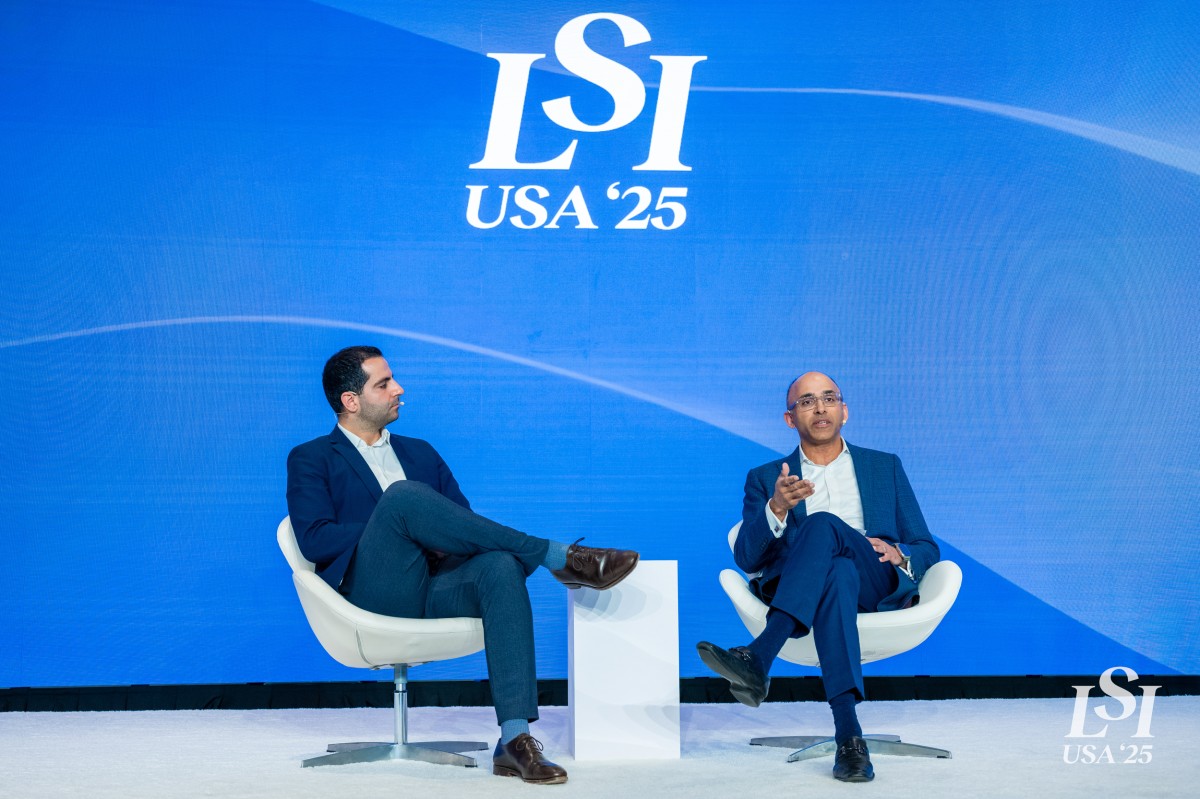
Artificial intelligence continues to gain ground across healthcare, but no specialty appears more ready, or more in need, of transformation than cardiovascular care. From improving diagnostics to enabling automation, AI in cardiovascular imaging is creating new possibilities for how providers detect, monitor, and intervene in heart disease. At LSI USA ’25, industry leaders from GE HealthCare, CorVista Health, Vista.ai, and Recode Ventures explored why cardiovascular medicine has become a proving ground for AI’s most advanced use cases, and what’s next.
Why Cardiology Leads the AI Curve
“Cardiology is rich with data: structured, multimodal data. Many problems in this field lend themselves well to automation and pattern recognition,” said Gera, who leads Cardiovascular and Interventional solutions at GE HealthCare. “It’s not just about workflow or clinical decision support. AI can elevate itself across the care continuum, from screening to diagnostics to intervention, all the way through follow-up.”
Vidian, Co-Founder and Co-Managing Partner at Recode Ventures, reinforced that trend from an investor’s lens. “We invest at the intersection of AI and healthcare because we believe AI is going to be fundamentally disruptive to CapEx and OpEx.”
But as Lam, CEO of CorVista Health, emphasized, cardiovascular care is not only data-rich but problem-rich. “It’s a multifactorial issue,” he said. “Access, compliance, adherence, and behavioral inertia all play a role. And because the problem is complex, the solution has to be multifactorial too. That’s where different types of AI for different use cases come in.”
Data, Complexity, and the Role of AI in Cardiovascular Imaging
The panelists agreed that imaging, especially cardiac MRI, represents one of the most immediate opportunities for AI-enabled improvement. “Cardiovascular imaging is very complicated,” said Hawkins, CEO of Vista.ai. “You have to manage breathing, EKGs, angles, and tissue properties. Properly trained AI, with the right datasets, can manage all that complexity better than a human.”
That complexity, Hawkins noted, is exactly why so few MRI machines in the US are used regularly for cardiac imaging: just 2 percent. “It’s the clinical gold standard, but it’s literally too hard to do. AI can change that.”
The quality of datasets is also a defining factor in whether a solution can move beyond point algorithms into system-level change. “We get excited when the data becomes multimodal,” Gera said. “That’s when you can start solving bigger problems and stitching together workflows across the care continuum.”
Clinical Acceptance and the Evolution of Trust
Even the best datasets and most sophisticated models face real-world barriers to adoption. “At first, there’s excitement,” said Lam, referring to CorVista’s rollout of accessible AI tools. “But it quickly moves into trepidation: What are the false positives? How does the AI explain itself? That concern comes fast.”
Over time, though, questions have evolved. “We used to have to explain everything from scratch,” said Gera. “Now clinicians are coming to us with their own ideas: ‘Why can’t you automate this?’ or ‘Can you bring my pre-procedural datasets into the OR?’ There’s more openness, and also more scrutiny. Ethics committees, AI governance groups, and questions about bias are now part of nearly every conversation.”
For Hawkins, clinical adoption of AI in healthcare is about trust and practical value. “Once you’re in, your gross margins are in the 90s,” he said. “The challenge is getting there. It’s not about body-heavy sales teams; it’s about long, time-heavy selling cycles and proving ROI.”
Partnering to Build the Future
While AI in cardiovascular imaging continues to grow, it’s clear that medtech startups and strategics will need each other to scale solutions effectively.
“We couldn’t do what we do without partnerships with GE and Siemens,” Hawkins said. Vista.ai’s software controls MRI hardware directly, thanks to decades of collaboration with Stanford’s imaging lab and source code access from the OEMs. “It’s a dynamic environment, and partnerships are essential.”
Lam echoed that sentiment. “We’re trying to do damage, in a good way,” he said. “But we don’t have the access or pedigree of a GE. We have to think creatively about partners: drug companies, AI model developers, whoever can help us get to the right patient at the right time.”
For Gera and GE HealthCare, the strategy is clear. “We want to build an ecosystem,” she said. “That means partnerships with startups, with cloud providers like Nvidia, and with anyone who can help us push forward, from democratizing ultrasound to developing autonomous scanning. It’s not about image quality anymore; it’s about solving a problem.”
AI’s Expanding Impact Across Cardiovascular Medicine
Looking to the future, the panelists shared a clear sense that AI’s role is just beginning.
“AI can help ensure the right patient gets to the right procedure,” said Hawkins. “Cardiovascular care is image-heavy, and computers are better at reading images than humans.”
Lam added that AI will surface connections we haven’t seen before. “There are overlapping symptoms and confounding factors in heart disease. AI can help us find patterns that aren’t obvious.”
And for Gera, one of the biggest shifts will come from breaking down silos. “Today, care is so episodic. AI will help integrate that care across the patient journey, from screening to therapy, to improve outcomes no matter where a patient is.”
-Joe-Mullings,-Andrew-ElBardissi,-Ramin-Mousavi,-Addie-Harris,-and-Josh-Makower.png)






